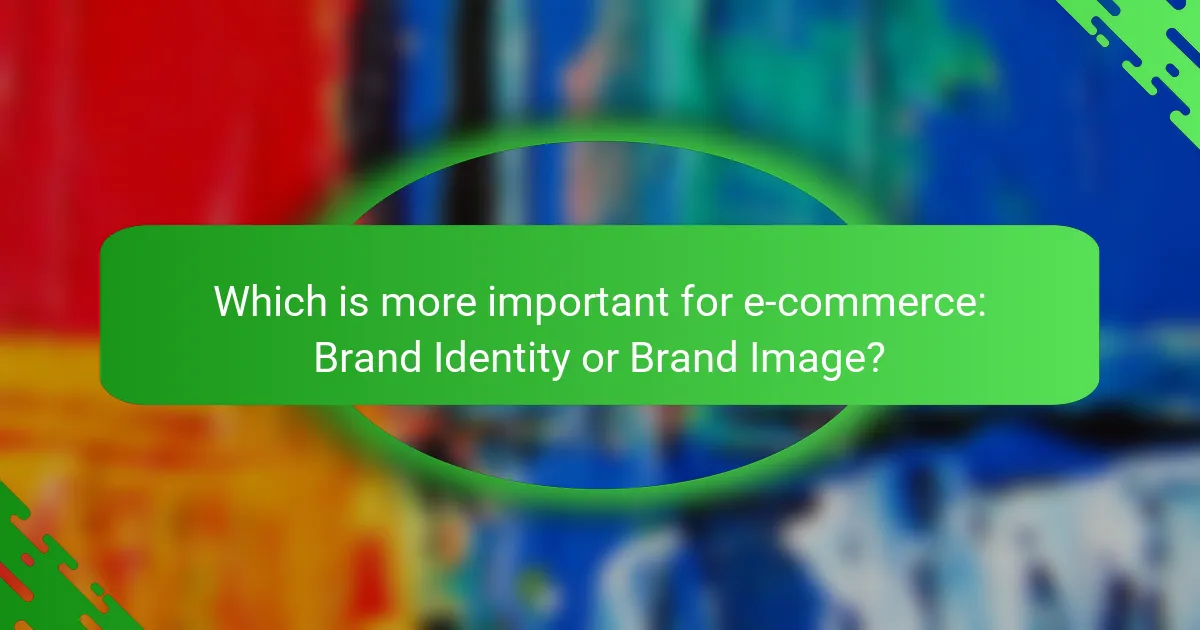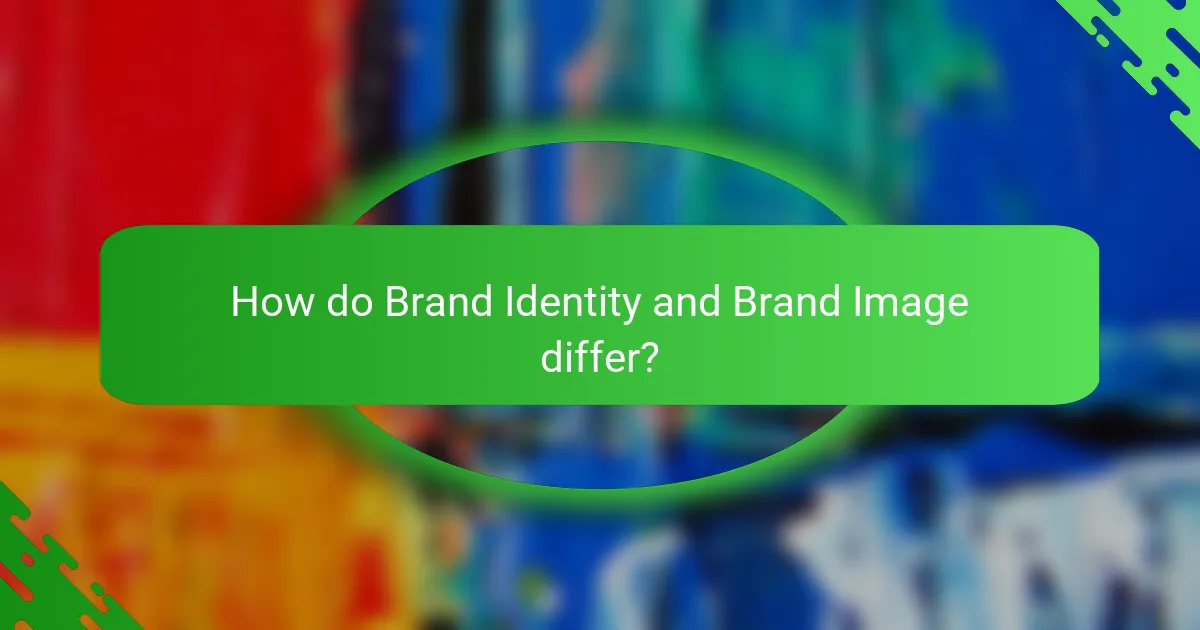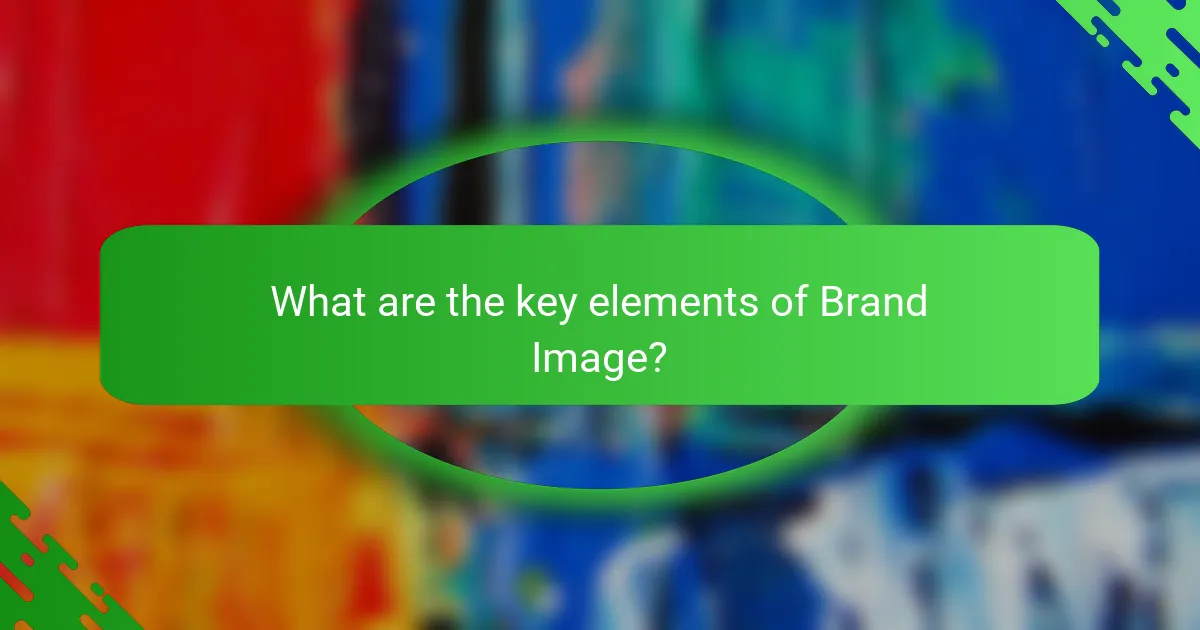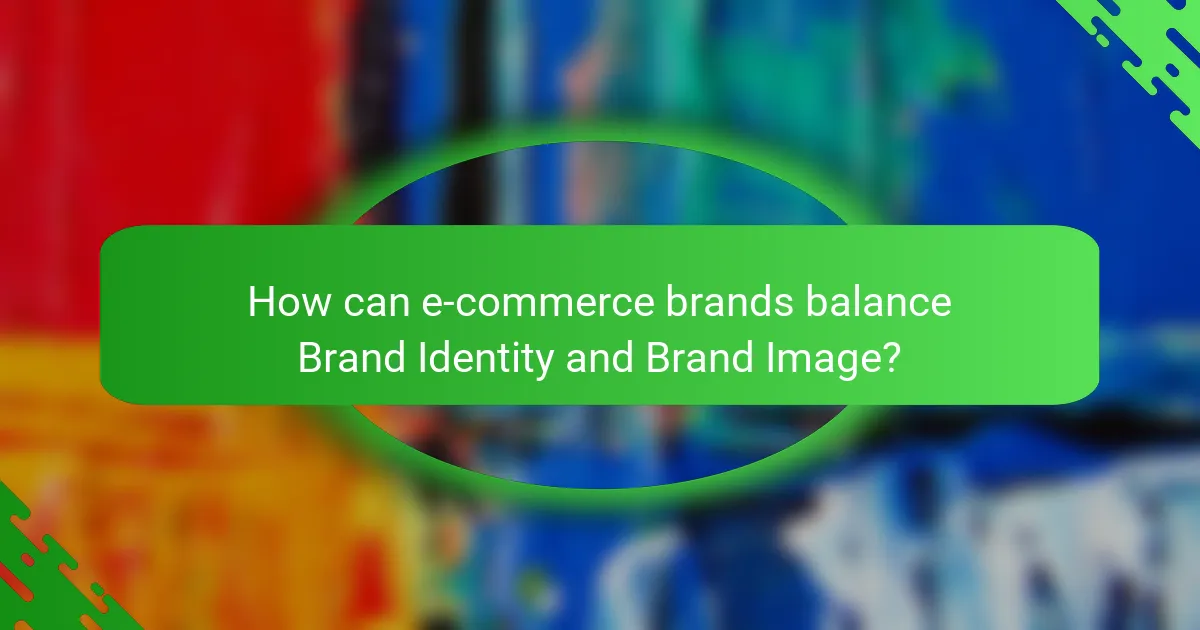In the competitive landscape of e-commerce, understanding the difference between brand identity and brand image is essential for success. Brand identity encompasses the internal elements that define a company, while brand image reflects how consumers perceive that brand externally. By recognizing when to prioritize each aspect, businesses can effectively shape their market presence and foster customer loyalty.

Which is more important for e-commerce: Brand Identity or Brand Image?
Both brand identity and brand image are crucial for e-commerce, but their importance can vary based on business goals. Brand identity focuses on how a company defines itself, while brand image is about how customers perceive that brand. Understanding the distinction helps businesses leverage each effectively.
Brand Identity establishes core values
Brand identity is the foundation of a business’s presence, encompassing its mission, vision, and core values. It shapes how a brand communicates and connects with its audience. For e-commerce, a strong identity can differentiate a brand in a crowded market.
To establish a compelling brand identity, businesses should define their unique selling propositions (USPs) and ensure consistency across all platforms. This includes visual elements like logos and color schemes, as well as tone of voice in communications. For example, a sustainable fashion brand might emphasize eco-friendliness in its identity, appealing to environmentally conscious consumers.
Brand Image influences customer perception
Brand image is the perception that customers hold about a brand based on their experiences and interactions. It can be shaped by marketing efforts, customer service, and even social media presence. In e-commerce, a positive brand image can lead to increased customer loyalty and repeat purchases.
To manage brand image effectively, businesses should actively engage with customers and respond to feedback. Monitoring online reviews and social media mentions can provide insights into public perception. For instance, a tech company might enhance its image by showcasing customer testimonials and addressing concerns promptly, thereby building trust and credibility.

How do Brand Identity and Brand Image differ?
Brand identity and brand image are distinct concepts that play crucial roles in how a company is perceived. Brand identity refers to the internal elements that a business creates to define itself, while brand image is the external perception held by consumers.
Brand Identity is internal and strategic
Brand identity encompasses the visual elements, messaging, and values that a company establishes to represent itself. This includes logos, color schemes, typography, and the overall tone of communication. A strong brand identity is essential for creating a cohesive strategy that aligns with the company’s mission and vision.
To develop a robust brand identity, businesses should focus on defining their core values, target audience, and unique selling propositions. This internal framework guides all marketing efforts and ensures consistency across various platforms. Regularly revisiting and refining brand identity can help maintain relevance in a changing market.
Brand Image is external and perceptual
Brand image is shaped by how consumers perceive a brand based on their experiences, interactions, and external communications. This perception can be influenced by advertising, social media presence, customer service, and word-of-mouth. A positive brand image can lead to increased customer loyalty and trust.
To manage brand image effectively, companies should actively engage with their audience and monitor feedback. Conducting surveys or using social media analytics can provide insights into public perception. Addressing negative feedback promptly and transparently can help mitigate damage to brand image and reinforce consumer trust.

When should e-commerce brands focus on Brand Identity?
E-commerce brands should prioritize brand identity during key phases of their development. Establishing a strong brand identity helps create a distinct presence in the market, guiding customer perceptions and loyalty.
During initial brand development
In the early stages of brand development, focusing on brand identity is crucial. This involves defining core values, mission, and visual elements that resonate with the target audience. For example, a sustainable fashion brand might emphasize eco-friendliness in its messaging and design.
Brands should consider conducting market research to understand customer preferences and expectations. This can help in crafting a unique identity that stands out among competitors, potentially leading to higher engagement and sales.
When redefining brand strategy
Brands may need to revisit their identity when redefining their overall strategy, especially if market conditions change or if they seek to attract a new demographic. This process should include evaluating existing brand elements and determining what resonates with current and potential customers.
For instance, a tech company shifting focus from consumer electronics to smart home solutions might need to update its branding to reflect innovation and connectivity. Engaging with customers through surveys or focus groups can provide valuable insights during this transition.

When should e-commerce brands prioritize Brand Image?
E-commerce brands should prioritize brand image when they aim to create a strong perception in the minds of consumers. This is crucial during specific phases, such as marketing campaigns and when responding to customer feedback, as these moments can significantly influence public perception.
During marketing campaigns
In marketing campaigns, brand image plays a vital role in attracting and retaining customers. A well-crafted image can evoke emotions and create a connection, making it essential to align visuals, messaging, and overall tone with the desired perception. For instance, a luxury brand may focus on exclusivity and sophistication in its campaigns, while a budget-friendly brand might emphasize value and accessibility.
When planning a campaign, consider the target audience’s preferences and values. Use imagery and language that resonate with them, and ensure consistency across all platforms. This alignment helps reinforce the brand image and can lead to higher engagement and conversion rates.
When addressing customer feedback
Addressing customer feedback effectively can enhance brand image significantly. When customers feel heard and valued, their perception of the brand improves, fostering loyalty and positive word-of-mouth. It’s essential to respond promptly and empathetically to both positive and negative feedback.
Implement a structured approach to feedback management. For example, acknowledge complaints publicly, offer solutions, and follow up privately to ensure satisfaction. This transparency not only mitigates potential damage to brand image but also demonstrates commitment to customer care, which can enhance overall reputation.

What are the key elements of Brand Identity?
Brand identity encompasses the visual and verbal elements that define a brand and distinguish it from competitors. Key components include logos, color schemes, typography, and messaging, all of which work together to create a cohesive representation of the brand’s values and personality.
Logo and visual elements
The logo and visual elements are crucial in establishing brand identity as they provide the first impression to consumers. A well-designed logo should be simple, memorable, and versatile, allowing it to be used across various platforms and mediums. Consider using a color palette that reflects your brand’s personality; for instance, blue often conveys trust, while red can evoke excitement.
In addition to the logo, visual elements such as typography and imagery play a significant role in brand identity. Consistency in these elements across all marketing materials reinforces brand recognition. For example, using the same font style in all communications helps create a unified look that consumers can easily associate with your brand.
Brand messaging and voice
Brand messaging and voice define how a brand communicates with its audience and the emotions it aims to evoke. This includes taglines, slogans, and the overall tone of voice used in marketing materials. A clear and consistent messaging strategy helps convey the brand’s mission and values, making it easier for consumers to connect with the brand on a personal level.
When developing brand messaging, consider your target audience and what resonates with them. For example, a luxury brand may adopt a sophisticated and formal tone, while a youth-oriented brand might use a casual and playful voice. Regularly reviewing and updating your messaging can ensure it remains relevant and aligned with your brand identity as market dynamics change.

What are the key elements of Brand Image?
Brand image consists of the perceptions and associations that consumers hold about a brand. It is shaped by various factors, including customer experiences, marketing communications, and overall reputation.
Customer reviews and testimonials
Customer reviews and testimonials are crucial components of brand image, as they provide social proof and influence potential buyers. Positive feedback can enhance a brand’s reputation, while negative reviews can significantly damage it.
To effectively leverage customer reviews, brands should actively encourage satisfied customers to share their experiences. Responding to reviews, whether positive or negative, demonstrates engagement and commitment to customer satisfaction.
Social media presence
A strong social media presence plays a vital role in shaping brand image by facilitating direct interaction with consumers. Brands can use platforms like Instagram, Facebook, and Twitter to showcase their values, share content, and respond to customer inquiries.
To optimize social media impact, brands should maintain consistent messaging and visuals that align with their identity. Regularly engaging with followers through posts, stories, and comments can foster a positive image and build community around the brand.

How can e-commerce brands balance Brand Identity and Brand Image?
E-commerce brands can effectively balance brand identity and brand image by ensuring that their core values and messaging are consistently communicated while being responsive to customer feedback. This involves aligning the brand’s internal vision with external perceptions to create a cohesive experience.
Consistent messaging across platforms
To maintain a strong brand identity, e-commerce brands must deliver consistent messaging across all platforms, including websites, social media, and email marketing. This means using the same tone, style, and visual elements to reinforce brand recognition.
For example, if a brand positions itself as eco-friendly, all communications should reflect this commitment through language, imagery, and product offerings. Inconsistencies can confuse customers and dilute the brand’s identity.
Regularly assess customer perceptions
Regularly assessing customer perceptions is crucial for understanding how brand image aligns with brand identity. E-commerce brands should utilize surveys, social media listening tools, and customer reviews to gather insights about how their audience views them.
By analyzing this feedback, brands can identify gaps between their intended identity and the actual image perceived by customers. This allows for timely adjustments in strategy, ensuring that the brand remains relevant and appealing to its target audience.

What tools can help manage Brand Identity and Brand Image?
Managing brand identity and brand image effectively requires the right tools to ensure consistency and clarity. Various design and management platforms can help streamline this process, allowing brands to maintain a cohesive presence across all channels.
Canva for design consistency
Canva is a user-friendly graphic design tool that helps maintain design consistency across various brand materials. It offers templates, color palettes, and font selections that align with your brand identity, ensuring that all visual content reflects your brand image accurately.
When using Canva, consider creating a brand kit that includes your logo, color scheme, and typography. This kit can be easily accessed by team members, promoting uniformity in all design projects. Regularly updating your brand kit as your identity evolves is also crucial.
To maximize Canva’s effectiveness, utilize its collaboration features. These allow multiple users to work on designs simultaneously, facilitating feedback and ensuring that all outputs adhere to your established brand standards.



